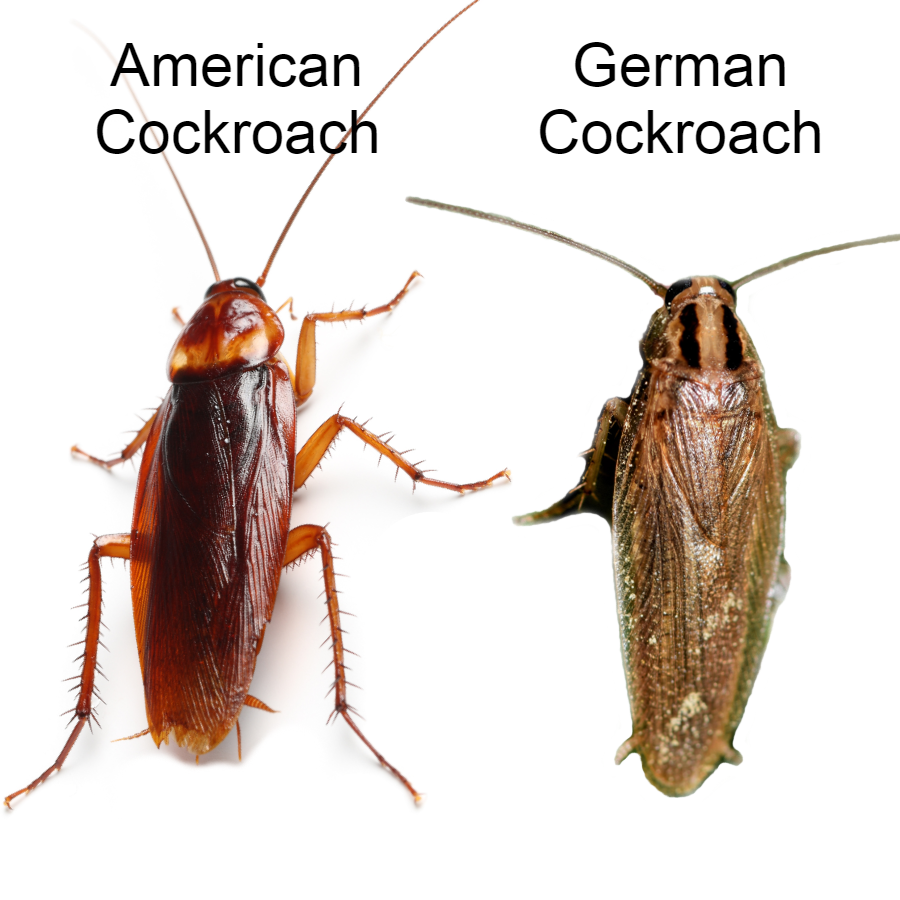American Cockroach vs German Cockorach

What is the difference between an American and German Cockroach?
American and German cockroaches are two of the most common species of cockroaches found worldwide, and they are often the cause of pest problems in homes and businesses. Here are some key differences between the two:
Size: American cockroaches are larger than German cockroaches. American cockroaches typically measure about 1.5 inches long (or longer), while German cockroaches are usually about 0.5 to 0.6 inches long.
Color: American cockroaches are reddish-brown, often with a yellowish figure 8 pattern on the back of their head, while German cockroaches are lighter, varying from tan to almost black, and they have two dark parallel lines running from the back of their head to their wings.
Habitat: American cockroaches prefer warm, humid environments and are commonly found in basements, kitchens, and bathrooms. They can live both indoors and outdoors. German cockroaches, on the other hand, are almost exclusively indoor pests, particularly in structures like restaurants, food processing facilities, hotels, and nursing homes. They are typically found in warm and humid areas close to food and water sources.
Lifecycle: German cockroaches reproduce faster than American cockroaches. A female German cockroach can produce an egg capsule containing up to 48 eggs every 3-4 weeks, while a female American cockroach typically produces an egg capsule of around 16 eggs every 6-7 weeks.
Behavior: Both species are nocturnal and will scurry away quickly when disturbed. However, American cockroaches are more likely to be seen flying or gliding from high places, while German cockroaches are more often seen scurrying across the floor or along the wall.
Both types of cockroaches are considered pests due to their potential to spread disease-causing bacteria and allergens, which can trigger asthma and other allergic reactions. However, their behavior, size, and preferred habitats can vary significantly, which influences how pest control methods are applied to eliminate them.
What makes German cockroaches more challenging to manage for pest control compared to American cockroaches?
Several elements make the German cockroach a more challenging pest to manage compared to the American cockroach:
Reproduction rate: German cockroaches reproduce much faster than American cockroaches. A single female German cockroach and her offspring can produce hundreds of thousands of cockroaches in just one year under ideal conditions. This rapid reproduction can quickly lead to large infestations.
Habitat preference: German cockroaches predominantly inhabit indoor environments. They tend to nestle in elusive spots such as crevices, cracks, and behind appliances, making them hard to locate and exterminate. Conversely, American cockroaches are found both indoors and outdoors and usually occupy more easily reachable locations.
Insecticide resistance: Certain German cockroach populations have developed resistance to standard insecticides over time, rendering them more difficult to eliminate.
Small size: Being smaller than American cockroaches allows German cockroaches to conceal themselves in a broader range of places, aiding them in evading pest control methods more effectively.
Feeding habits: German cockroaches are scavengers and are more adaptable in their diet. They will eat almost anything, including glue, soap, and toothpaste if food sources are scarce, allowing them to survive in a wider range of conditions.
In contrast, the American cockroach, with its slower reproduction rate, larger size, and lack of strong insecticide resistance, is generally simpler to control.